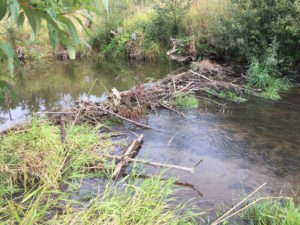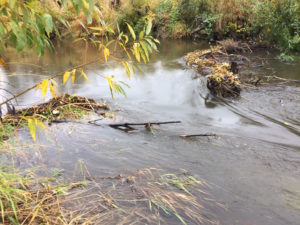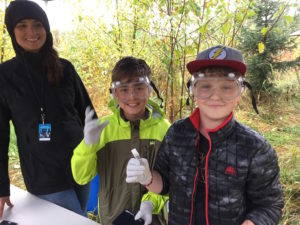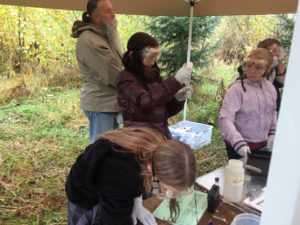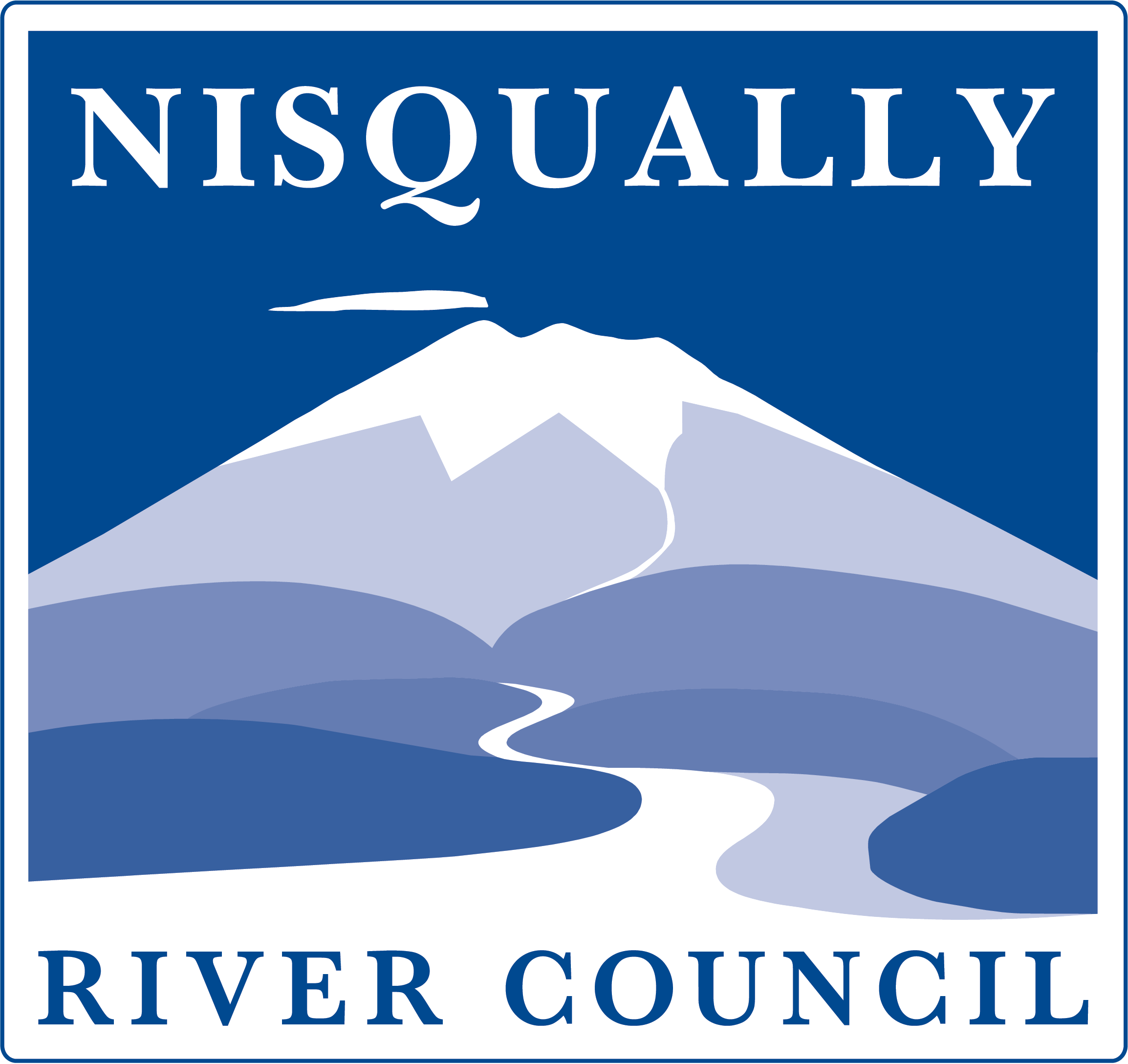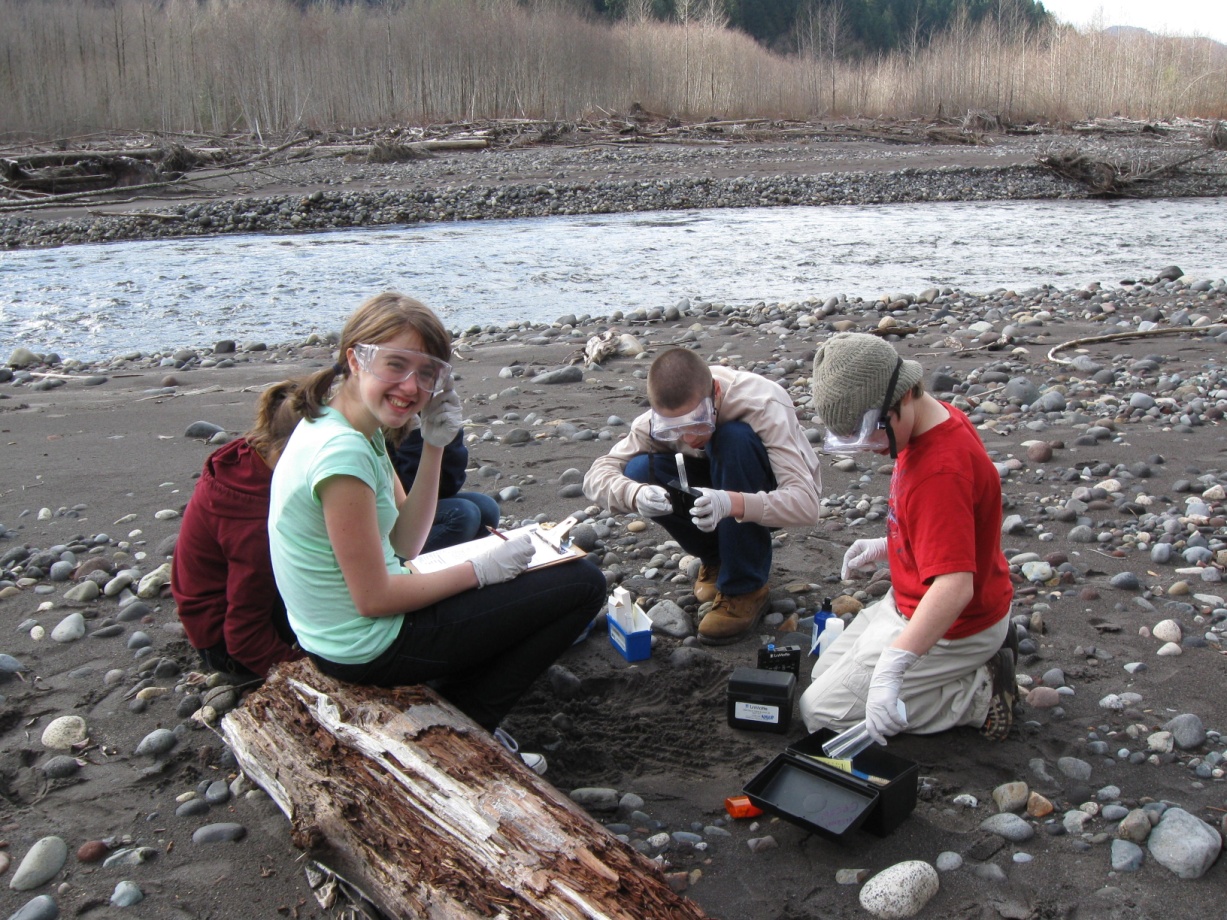On October 19th, 47 classes with more than 900 students participated in Water Quality Monitoring Day in the Nisqually Watershed. Each class monitors for 8 basic WQ Parameters: Dissolved Oxygen, Temperature, Fecal Coliform, pH, Turbidity, Nitrates, Total Solids, and Biochemical Oxygen Demand. These test results are shared with local, county, tribal and state partners interested in the health of the Nisqually Watershed. Even though it was a wet and rainy day, it’s a valuable experience to be out in the field, observing the ecosystem around the river and learning to navigate a challenging environment. Sometimes, as Matt Pederson’s 5th grade class from Eatonville discovered, you can get a real sense for how quickly nature can change! Thanks, Mr. Pederson, for sharing your WQM adventure!
On arrival at our new (to us) monitoring site, several students and parents hastily set up our pop-up canopies in the rain while the rest of our 44 students and and 14 parent volunteers waited on the bus. We had to hike in about 50 yards to find a shallow spot in Ohop Creek just downstream of an old beaver dam. I quickly waded into 4 inches of gentle water and collected our initial samples.
Once set up, we started unloading kids and getting into our groups. We had a three station rotation planned – one teacher doing an art project, one volunteer leading a stream walk, and me running the water tests. It was raining hard enough that the art station was held on the bus and I was very thankful for the volunteers who’d brought the pop-ups.
Fifteen minutes later, the water testers were gloved, goggled and working intently. Time for me to grab some more dissolved oxygen samples. When I got to the bank, the stream walk group was standing along the edge 20 yards downstream calling out and waving at me. Nice to know they’re so excited to see me! I walked into the stream toward where I got my last sample. Strange that the water seems so much deeper, I thought, – did I find a hole? It was at least 8 inches deep now and seemed to be rising. Was it raining that hard? Meanwhile, the group downstream was still waving and pointing and calling out to me. Seems like there’s better things to watch than me wading in the stream, but they appeared to be quite entertained. I uncapped my bottle and reached down. Now the water was over a foot deep and flowing so fast it was splashing over my boot and I couldn’t get the bottle under water without splashing myself in the face. Then I noticed a log float by. Finally, I looked upstream. The beaver dam was more than half way gone with more pieces being washed away as I watched. All the water held behind that dam was now rushing past me. Luckily, despite the rain, Ohop Creek was still not running all that high. As I stood and watched the last of the dam wash away, the water level went back down and I finished my collections. Disappointed that they didn’t get to see their teacher take an unplanned swim, the stream walk group turned away and continued looking for beavers.
